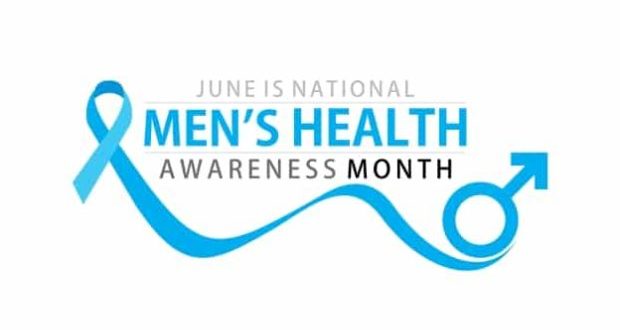Men’s Health Month : How To Prioritize Your Health
We understand there’s a lot to manage as a parent going into summer. Kids are home from school, the yard needs more attention, and the neighbors enjoy the nice weather—throwing a BBQ every weekend. Men’s Health Month falls during the summer and there’s no better time to check your health.
Father’s Day is around the corner, and you’ll be reminded how grateful you are to have a life filled with love. The end goal is to be around for those people as long as you can be.
Men’s Health Awareness Week falls on the days preceding Father’s Day. This makes it a perfect time to check in on your mental and physical well-being.
Common Illnesses Men Face
Research company, Statista, highlights the leading causes of death for men in 2017 were heart disease and cancer. Furthermore, men have a shorter life expectancy by an average of five years. This is due to a collection of factors including substance and alcohol abuse and participating in more high-risk activities.
Men aren’t always provided the proper resources to manage their health. In many cases, they choose not to seek out medical assistance at all. Consequently, missing your regular checkups can increase your chance of developing heart disease and the following cancers:
Prostate Cancer
This form of cancer is most commonly seen in men over 50 years old. With symptoms that tend to appear later in life, it can be difficult to diagnose if checkups aren’t a part of your routine.
That said, there are plenty of symptoms that can also develop. Therefore it’s imperative you know what they are and seek medical assistance if there’s any suspicion that something may be wrong.
Signs
– Trouble urinating
– Blood in the urine
– Bone pain
– Losing weight without trying
– Erectile dysfunction
Like other cancers, prostate cancer can be hereditary. So, it’s important to be as informed as possible about your family history. If your family history also includes the BRCA1 or BRCA2 (breast cancer) gene, you are at a higher risk of developing prostate cancer.
Obesity, while not being a direct factor linked to this type of cancer is a factor that can make already existing symptoms more aggressive and cause treatment times to be longer. Talking to your doctor about your likelihood of risk early on is an important first step.
Then, those who are deemed high risk can consider medications and treatments. Those who aren’t able to access that information due to adoption, lost family records, etc., should still have this conversation with their doctor and from there choose whether or not to be screened by way of the prostate-specific antigen (PSA) blood test or digital rectal exam (DRE).
Colon and Rectal Cancers
While this type of cancer is more likely to affect older adults, it can develop at any age. Colon cancer occurs when polyps that are non-cancerous cells form inside the large intestine and change into cancerous cells.
This does not mean it will happen, but that there is an increased likelihood as long as polyps exist. Once again, it’s important to consult with your doctor about screenings. CDC and other health sources recommend that most older men over the age of 50 receive regular screening tests to catch polyps in their pre-cancerous state.
Signs
– Constipation or diarrhea
– Rectal bleeding or blood in your stool
– Persistent abdominal discomfort
– Weakness or fatigue
– Drastic/unexplained weight loss
Risk factors relevant to the increased chance of colon cancer include older age, history of polyps in the large intestine, chronic inflammatory diseases like ulcerative colitis or Crohn’s disease, family history, and eating habits. A less physical lifestyle, obesity, smoking, and excessive alcohol use also lead to a higher risk of the development of colon cancer.
High Blood Pressure and Cholesterol
Having high blood pressure and cholesterol leads to damaged arteries and, in turn, a higher risk of cardiovascular diseases like heart attacks and strokes. The risk for developing this disease starts at a much earlier time in your life—around 20—and builds with age.
There isn’t a list of symptoms for high cholesterol because it’s something that can only be found through a blood test done about every five years. You may receive more frequent tests if your doctor is concerned.
As WebMD explains, too much cholesterol in your system is “like rust on the inside of a pipe.” Cholesterol is the rust; the pipe is your arteries. This causes the arteries to shrink and, in turn, reduces the oxygen supply levels to the heart.
In turn, blood vessels are blocked, and the heart becomes strained, inevitably leading to a heart attack. If the involved blood vessels lead to the brain, a stroke can occur.
Including more physical activity in your day can reduce blood pressure and eating healthier, low-cholesterol, foods will help to prevent the build-up of plaque in your arteries. While frequent blood tests work best to identify high blood pressure or cholesterol, the following symptoms and signs should serve as a warning to set up an appointment with your doctor as soon as possible.
Signs of High Blood Pressure
– Pounding feeling in head or chest
– Frequent feelings of dizziness or lightheadedness
Signs of High Cholesterol/Heart Disease
– Chest pain
– Nausea
– Extreme fatigue
– Shortness of breath
– Numbness or coldness in extremities
If the above signs are ignored, you may be at higher risk for a heart attack or stroke.
Symptoms of a Stroke
– Sudden loss of balance
– Dizziness/sudden severe headache
– Facial asymmetry
– One side of the body no longer able to be moved
– Slurred speech
– Numbness in the face, arm, or leg
– Blurred or blackened vision
Symptoms of a Heart attack:
– Tightness in chest or arms
– Anxiety
– Dizziness
– Nausea, indigestion, or heartburn
– Excessive fatigue
– Difficulty breathing
It’s imperative to be able to recognize these signs because they are much more likely to cause permanent damage to the heart or brain if not immediately addressed.
Mental Health
This facet of individual health is frequently overlooked due to the stigma surrounding it. According to the CDC, men are less likely to receive mental health treatment than women. Men are also more likely to die by suicide than women. Common forms of mental illness in men include:
– Anxiety
– Depression
– Bipolar disorder
– Psychosis and schizophrenia
– Eating disorders
Depression alone affects 6 million men per year. As covered by Mental Health America, male depression frequently surfaces under the guise of fatigue, irritability, loss of interest in work/hobbies, and laziness.
Men rarely relate these symptoms to feelings of sadness or hopelessness or outright depression. If you’re unsure whether or not you need to seek professional help—assess the following common signs of a mental illness.
Substance and alcohol abuse are especially important to keep an eye out for because they not only affect mental and physical wellbeing but also increase the risk of making rash decisions. Men tend to have a higher rate of dependence on illicit drugs and alcohol than women. This abuse of drugs leads to a higher chance of overdose deaths and more frequent emergency department visits.
How to Get Help for a Mental Illness
To get help early on for a mental illness, it’s important to know resources for you and your loved ones to access. Gaining access to a professional well-versed in treatment, as a therapist or psychiatrist, can start you on a positive track forward to finding a healthy outlet for the overwhelming thoughts.
The following resources and hotlines are helpful if you’re looking to gain immediate support for yourself or a loved one:
– National Suicide Prevention Lifeline: Call 1-800-273-TALK (8255) any time to connect with a skilled, trained counselor at a crisis center in your area. Support is available in English and Spanish and via live chat.
– ManTherapy.Org: This website tackles the conversation of men’s mental health with the focus on breaking the stigma.
– Veterans Crisis Line: free and confidential, this resource supports Veterans of all ages and backgrounds. Call 1-800-273-8255, press ”1”; text 838255; or chat online to connect with 24/7 support.
Preventative Care
Many doctors agree that routine testing is necessary to successfully mitigate or prevent the development of cancers. While you should meet with your primary care provider (PCP) for an annual checkup once a year, screenings like the ones above are only really necessary every 3-5 years.
“When visiting their health care providers, Fidelis Care encourages men to ask about important health screenings – including prostate, colorectal, and testicular cancer. Regular screenings can save lives and help identify any health concerns when they are in their earliest, most treatable stages,” says Dr. Vincent Marchello, Fidelis Care Chief Medical Officer.
“If a routine annual visit was skipped during the COVID-19 pandemic, now’s the time for men to prioritize their physical and mental health and wellness and make an appointment for a checkup with their primary care provider.” You can find more healthy advice on Fidelis Care’s Twitter account.
Reevaluation of Exercise and Diet
Along with routine testing, it’s important to evaluate any habits and if there is room for adjustment to lower your risk for health concerns like heart disease. The American Heart Association recommends 150 minutes of heart-pumping physical activity per week.
Additionally, spending less time sitting, and adding in more casual walks throughout your day, can reduce the risks of a sedentary lifestyle. Bonus—getting outside in the fresh air is beneficial for your mental wellbeing as well.
Vitamin D is a major mood booster and adding physical activity will release serotonin and dopamine, helping to regulate your mood and appetite. It’s also important to reevaluate the foods you eat. While burritos every day in college may not have affected your waistline then, they definitely will now.
Fatty, high-sodium/high-cholesterol foods increase your risk of heart disease, and it’s important to take note of what foods generally don’t make you feel too great after eating them. This doesn’t mean getting rid of sweets and fattier foods altogether, but as you get older, it’s important to have a conversation with your doctor about what foods should be limited.
Your doctor will likely let you know what foods are better options for your past indulgences. Maybe you’ll find something new to snack on in the process! The consumption of whole grains, oats, and most veggies and fruits will help with lowering your blood pressure and cholesterol levels.
Eating meat like chicken and fattier fish will also help in this process, as they tend to be leaner and not as hard for your body to digest—as opposed to red meat. It’s natural for your medical needs to change as you age, but it’s important to understand that there are plenty of resources to help you proactively manage your health.
Being a man and a dad doesn’t mean you shouldn’t take care of your health. Here are five silent killers of modern dads. Give your doctor a call today and set up your routine appointments, so you can do your best to live a happy and healthy life.








